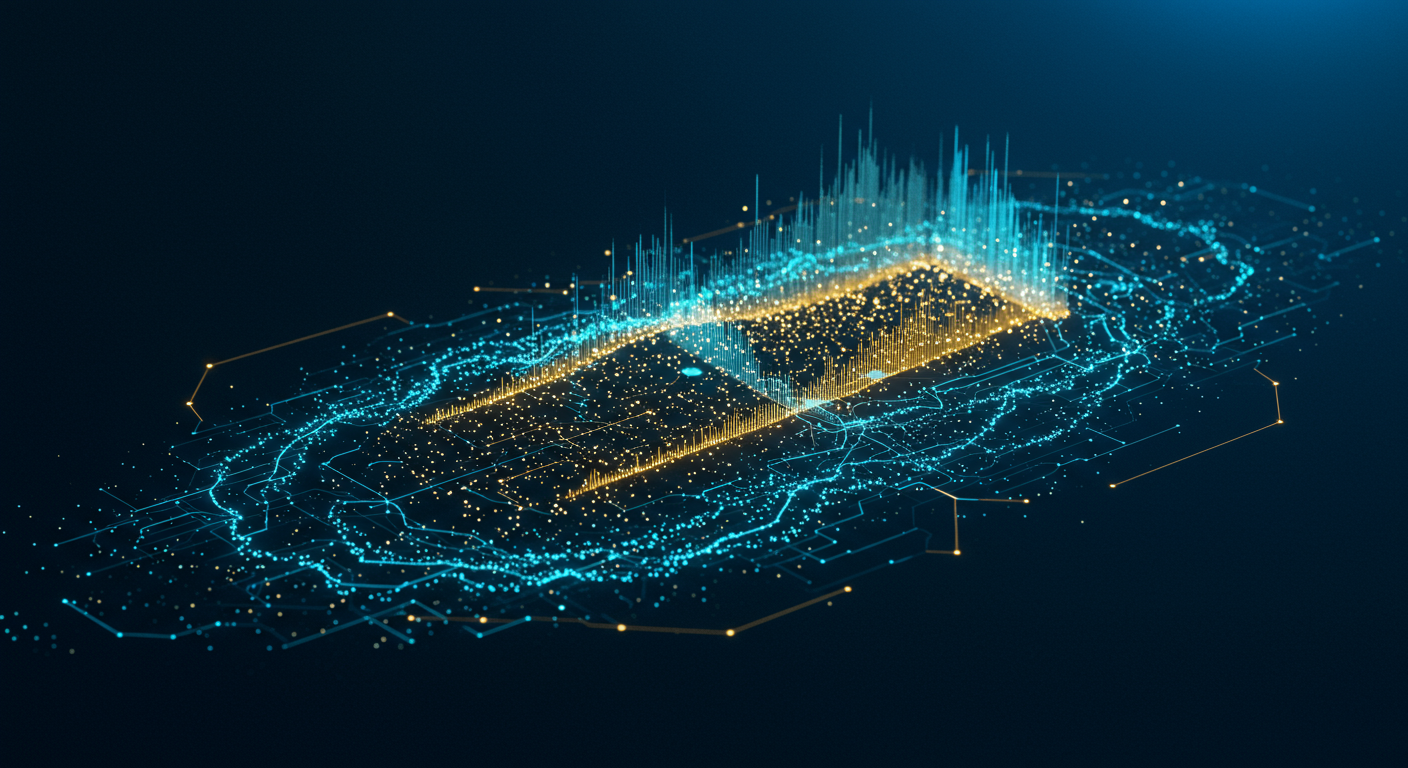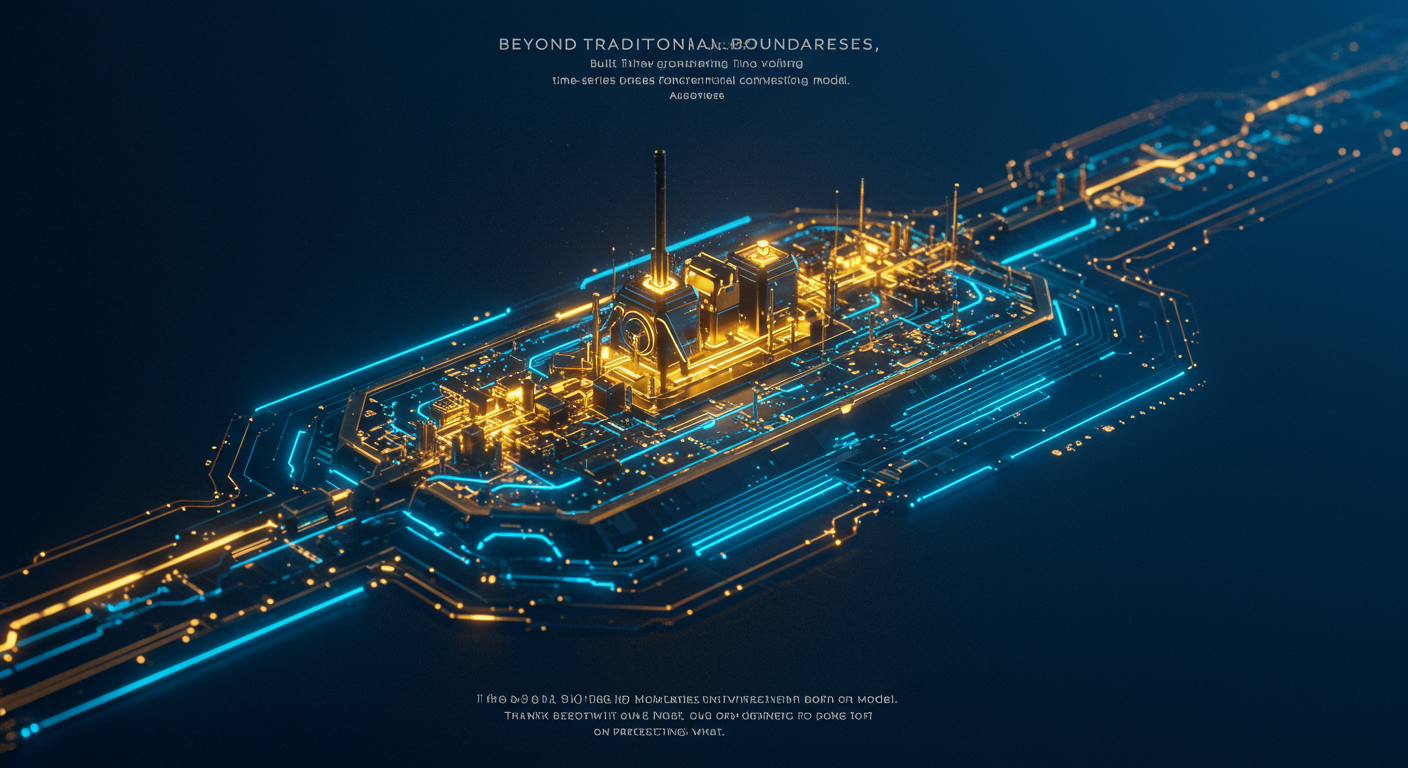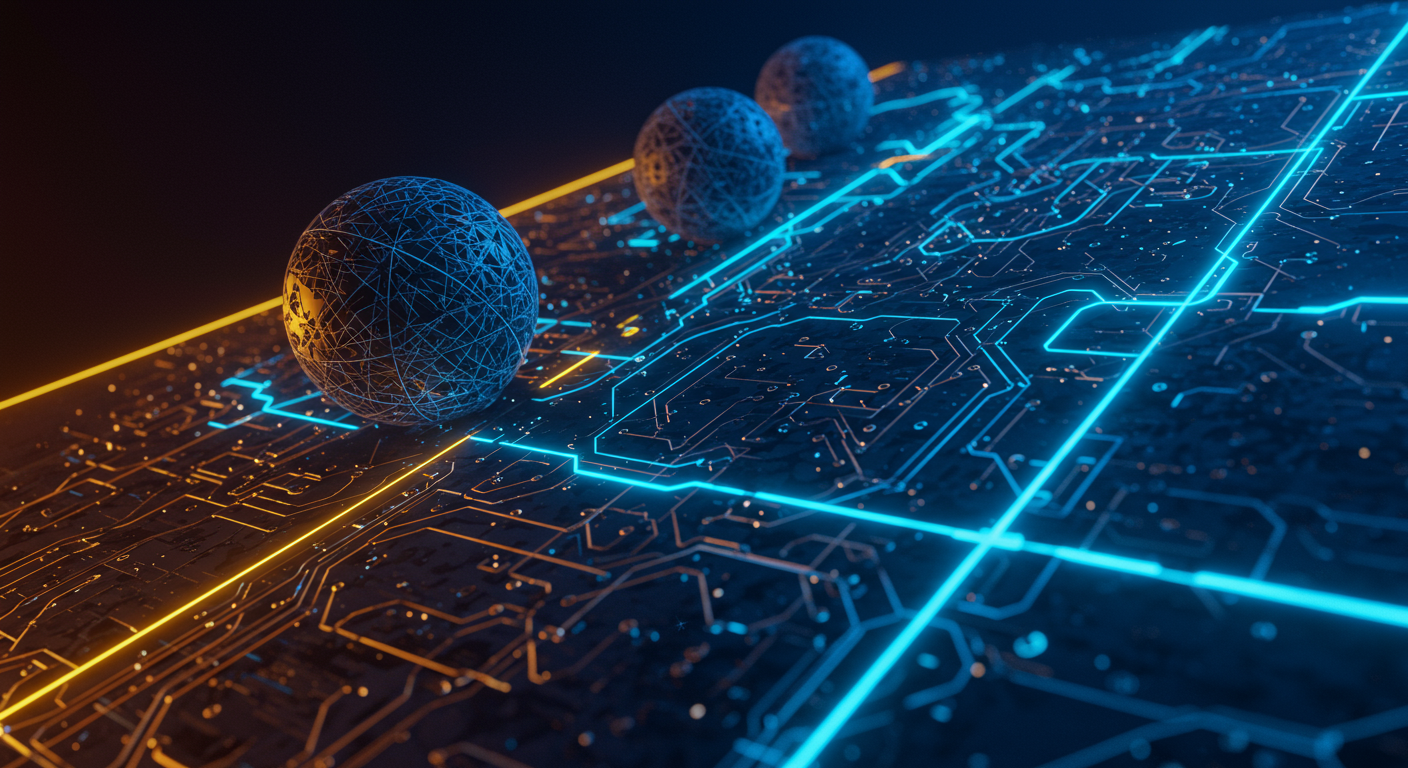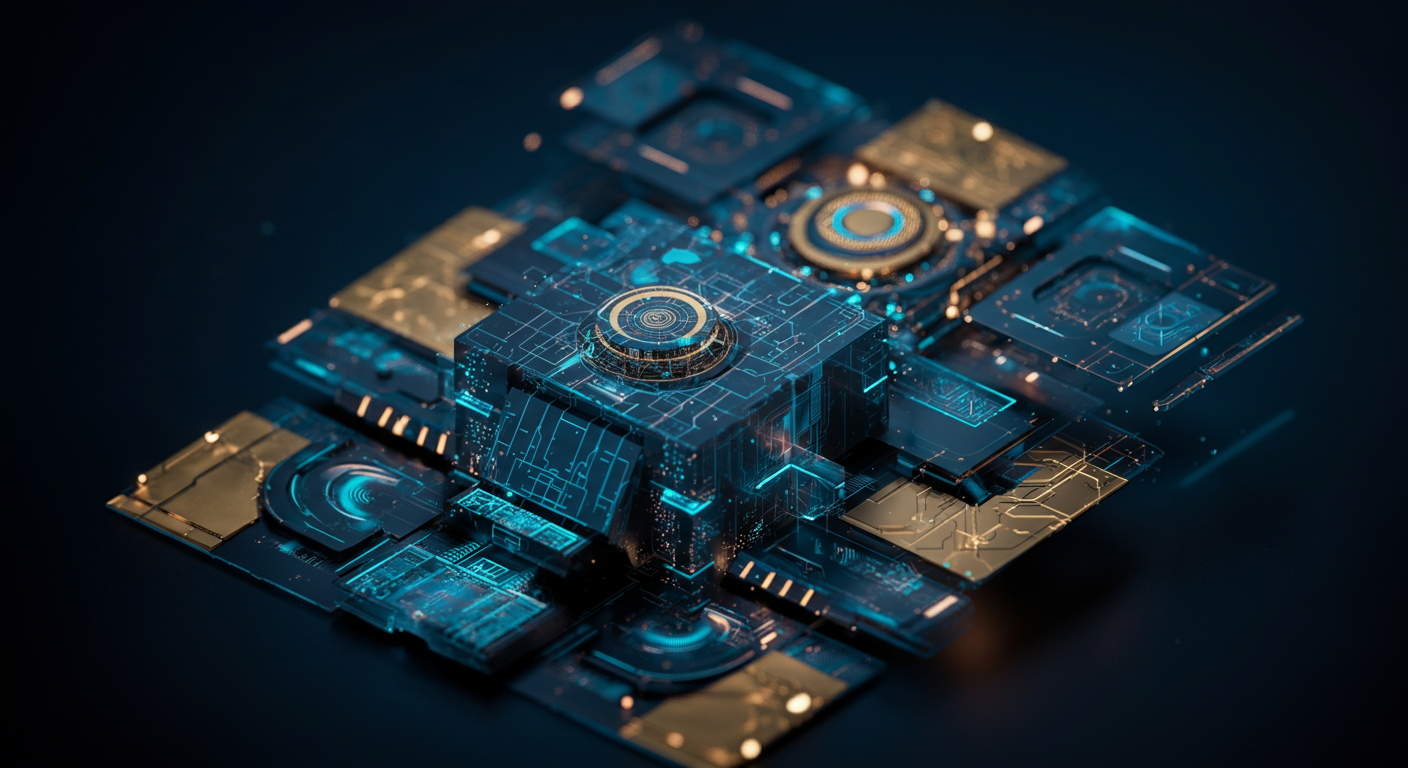Salesforce Moirai 2.0: The Ultimate Guide to its Time-Series Foundation Model

Salesforce Moirai 2.0 enters the arena at a time when predicting the future of, well, pretty much anything is paramount to business survival.
The Need for Time Travelers
Time series forecasting - predicting future data points based on past trends - is no longer a nice-to-have; it's the crystal ball of modern business. Think inventory management, financial predictions, and even anticipating website traffic.Enter Moirai 2.0
Salesforce unveils Moirai 2.0, its latest foundation model designed specifically for time-series data. The significance? Salesforce wants to take on a leading role in the AI space and provide predictive capabilities across its customer base. Foundation models are pre-trained on vast amounts of data and can be fine-tuned for specific tasks.Evolutionary or Revolutionary?
Is Moirai 2.0 a genuine quantum leap or simply another step in the evolutionary AI ladder?
That's the million-dollar question. While the specifics are still emerging, the promise of improved forecasting accuracy certainly perks up the ears of any data-driven professional. Is it truly disruptive, or just a polished update? We are always looking at new AI tools to understand where Software Developer Tools can get a boost.
Community Buzz
Initial reactions are cautiously optimistic. The AI community, ever the skeptical bunch, awaits concrete benchmarks and real-world applications. The proof, as they say, will be in the pudding – or rather, in the predictive accuracy.In short, Moirai 2.0 holds the potential to reshape how businesses anticipate and react to market dynamics. We'll be keeping a close eye on it, and you should too. Stay tuned as we delve deeper into the nuts and bolts of Salesforce's latest offering.
Decoding the Decoder-Only Architecture: What Makes Moirai 2.0 Tick?
Salesforce’s Moirai 2.0 is making waves in time-series forecasting, and its decoder-only architecture is at the heart of its capabilities. Let's dive into what makes this choice so compelling.
The Decoder-Only Difference
Imagine a language model focused solely on generating text. That's the essence of a decoder-only architecture. Unlike encoder-decoder models, which first compress the input and then generate, decoders do it all in one go. This simplicity can lead to:
- Faster Inference: Fewer steps mean quicker predictions.
- Scalability: Often easier to scale up in terms of model size and training data.
- Autoregressive Nature: Predicts the next value based on previous ones – ideal for sequences.
Moirai 2.0: Specs and Smarts
Details on Moirai 2.0's model size and precise training data are closely guarded. But we can assume a large-scale transformer, pre-trained on massive datasets of time-series data. What is evident is a focus on:
- Algorithmic improvements: Refinements to attention mechanisms for better long-range dependencies.
- Scalability: Built to handle very large datasets and complex forecasting tasks.
Why Decoder-Only for Time Series?
The choice isn't arbitrary. The autoregressive nature of decoder-only models is perfectly suited for time series, where the future depends heavily on the past.
- Performance: Benchmarks likely favored decoder-only models for specific time series tasks.
- Scalability: This architecture is known for easier scaling, crucial for industrial-scale forecasting.
Addressing the Limitations
Decoder-only models aren't perfect. They can sometimes struggle with bidirectional context (understanding how future events might influence the past). Salesforce likely mitigates this through:
- Ensemble Methods: Combining multiple models with different architectures.
- Careful Data Preprocessing: Ensuring clean and informative input data.
Forget just forecasting – Salesforce Moirai 2.0 is about to redefine how businesses understand and leverage time.
Beyond Traditional Boundaries

Moirai 2.0, built on a groundbreaking time-series foundation model, transcends conventional forecasting. Think of it not just as predicting what will happen, but understanding why.
- Finance: Beyond predicting market trends, Moirai 2.0 can detect anomalies indicating fraudulent activity or predict customer churn based on transaction patterns. The Salesforce ecosystem offers unparalleled data integration potential here.
- Healthcare: Predict patient readmission rates or anticipate outbreaks by analyzing time-based health data. A potential ROI here includes reduced operational costs and improved patient outcomes.
Unveiling the Untapped Potential
Moirai 2.0 unlocks a suite of capabilities far beyond simple predictions.- Anomaly Detection: Identify unusual patterns that signal potential fraud, equipment failure, or market disruptions.
- Predictive Maintenance: Proactively schedule maintenance based on usage patterns, minimizing downtime and extending asset lifespan. Imagine a manufacturing plant reducing downtime by 20% simply by integrating Moirai 2.0 predictions.
- Scenario Planning: Model the impact of various events on key performance indicators, enabling proactive decision-making.
Synergistic Salesforce Integration
Moirai 2.0 isn't a standalone tool; it’s designed to work in concert with other Salesforce products. Imagine:- Sales Cloud: Predict which leads are most likely to convert based on historical interaction data, boosting sales efficiency by X%.
- Service Cloud: Anticipate customer service needs and proactively address potential issues before they escalate, resulting in higher customer satisfaction scores.
Moirai 2.0 vs. The Competition: Benchmarking Performance and Capabilities
Salesforce’s Moirai 2.0 isn’t just another time-series model; it’s gunning for the crown, but how does it really stack up against the established players?
Head-to-Head: Accuracy, Speed, Scalability
Let's be real: benchmarks are everything. Moirai 2.0 is pitched against mainstays like Prophet, ARIMA models, and cutting-edge deep learning architectures.- Accuracy: While Salesforce claims Moirai 2.0 delivers superior long-term forecasting accuracy, independent tests are still rolling in. Early signs suggest a strong showing in handling complex seasonality, a known weak spot for ARIMA.
- Scalability: Here’s where Moirai 2.0 shines. Built on a foundation designed for Salesforce's vast ecosystem, it's inherently scalable. Can your in-house ARIMA setup say the same?
Strengths and Weaknesses: What Makes Moirai 2.0 Tick?
Moirai 2.0 seems purpose-built for business users comfortable within the Salesforce universe. This might be a weakness for those wanting more agnostic solutions.
Here's the rub: Moirai 2.0 is powerful, but not without caveats:
- Strengths: Seamless integration with Salesforce, strong out-of-the-box performance, and impressive scalability.
- Weaknesses: Potential vendor lock-in, a need for more independent performance validation, and a pricing model that could be prohibitive for smaller operations.
The Price of Prediction
Pricing and licensing matter. While specifics are still emerging, expect Moirai 2.0 to be positioned as a premium offering. This could be a deal-breaker when solutions like Prophet (open-source) or cloud-based services from Google Cloud AI Platform offer compelling alternatives.The Verdict: Expert Opinions and Reviews
The AI community is watching closely. Initial reactions are cautiously optimistic, highlighting Moirai 2.0’s potential, but stressing the need for real-world testing and comparison against tailored deep learning approaches. Stay tuned – the data will tell the full story.Ethical time travel? Not quite, but let's talk about the moral compass guiding AI's ability to predict our future timelines.
Ethical Considerations and Responsible AI: Addressing the Challenges of Time Series Prediction
Predicting the future sounds cool, right? But when that prediction is done by an AI like Salesforce Moirai 2.0, it raises some crucial questions about ethics. Moirai 2.0 helps businesses analyze data and predict future trends. You can learn more about its capabilities here.
Bias Mitigation and Data Responsibility

Using AI for time series forecasting isn't without peril. These systems can inherit biases present in the training data, leading to:
- Unfair predictions: If historical data reflects discriminatory practices, the AI might perpetuate them. For example, if loan application data shows a bias against a particular demographic, Moirai 2.0 could inadvertently deny loans based on that same bias.
- Unintended consequences: An AI predicting future customer behavior could be used to manipulate users, violating their autonomy.
- Data Privacy: We must consider if the data fed into models like Moirai 2.0 for time series forecasting respects user privacy and complies with data protection laws. The team at Salesforce is addressing data privacy concerns, focusing on security, transparency, and responsible AI development.
- Transparency: Models must be transparent, which makes it easier to identify and correct biases, understand why an AI arrived at a specific prediction.
Explainable AI (XAI) and AI Governance
Explainable AI (XAI): Salesforce is implementing XAI to help understand why* Moirai 2.0 makes certain predictions. This helps build trust and allows humans to correct any errors.
- AI Governance: How does this align with regulations? Moirai 2.0’s development considers existing AI governance frameworks to ensure responsible and compliant deployment.
Conclusion
Moirai 2.0 represents a leap in AI-powered time series analysis, but ethical considerations must be at the forefront. This ongoing journey requires continuous vigilance and proactive strategies to ensure fairness, transparency, and accountability. Now that we've navigated ethical considerations, let's explore real-world applications.
The ability of AI to analyze and forecast time-dependent data is experiencing exponential growth.
Enhancements to Moirai 2.0: A Glimpse into the Future
Salesforce's Moirai 2.0 offers a solid time-series foundation model, and one can envision exciting enhancements:
Increased Granularity: Imagine the model ingesting data at even finer* time scales – from milliseconds to nanoseconds – unlocking insights previously obscured by aggregated views. Explainable AI (XAI) Integration: Understanding why* Moirai 2.0 predicts a certain trend is crucial. Future releases could incorporate robust XAI techniques to provide transparent, actionable insights.
- Automated Feature Engineering: The AI itself identifies relevant features from raw data, removing the need for manual feature selection.
Emerging Trends Shaping Time Series Analysis
The future of time series AI is intertwined with several key emerging trends:
Federated Learning: Imagine training Moirai 2.0 on decentralized datasets without* compromising privacy, opening up new avenues for collaborative model building. This is made possible through Federated Learning.
- Quantum Computing: While still nascent, quantum algorithms could revolutionize time series modeling by efficiently handling computationally intensive tasks.
- Generative AI: While better known for image generation, generative AI can be used to simulate future scenarios and augment the training data of time series models. Learn more by exploring Generative AI.
Long-Term Impact and a Call to Action
"The real value of AI in time series analysis lies not just in predicting the future, but in empowering us to shape it."
AI is poised to fundamentally reshape time series analysis, impacting fields from finance to climate science. By leveraging AI tools like Data Analytics AI Tools, researchers and practitioners can unlock deeper insights and make more informed decisions.
I encourage you to explore Moirai 2.0 and share your experiences, as the future of time series AI is being written now, and your insights are invaluable.
Keywords
Salesforce Moirai 2.0, Time Series Foundation Model, Decoder-only Transformer Architecture, Salesforce AI, Moirai AI, AI Time Series Forecasting, Salesforce Einstein AI, Moirai 2.0 architecture, Time series analysis AI, AI forecasting models, Salesforce AI platform, Machine learning time series, Deep learning time series
Hashtags
#SalesforceAI #Moirai2 #TimeSeriesAI #AIInnovation #DecoderOnlyTransformer
Recommended AI tools
ChatGPT
Conversational AI
AI research, productivity, and conversation—smarter thinking, deeper insights.
Sora
Video Generation
Create stunning, realistic videos and audio from text, images, or video—remix and collaborate with Sora, OpenAI’s advanced generative video app.
Google Gemini
Conversational AI
Your everyday Google AI assistant for creativity, research, and productivity
Perplexity
Search & Discovery
Clear answers from reliable sources, powered by AI.
DeepSeek
Conversational AI
Efficient open-weight AI models for advanced reasoning and research
Freepik AI Image Generator
Image Generation
Generate on-brand AI images from text, sketches, or photos—fast, realistic, and ready for commercial use.
About the Author

Written by
Dr. William Bobos
Dr. William Bobos (known as 'Dr. Bob') is a long-time AI expert focused on practical evaluations of AI tools and frameworks. He frequently tests new releases, reads academic papers, and tracks industry news to translate breakthroughs into real-world use. At Best AI Tools, he curates clear, actionable insights for builders, researchers, and decision-makers.
More from Dr.

